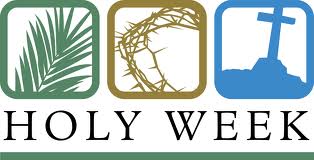Notes on the Notes – March 24, 2013
Theme: A Different Model of Success
Readings: Luke 19:28-40, Philippians 2: 5-11
Palm Sunday is the sixth Sunday of Lent and the last Sunday before Easter. Palm Sunday commemorates the triumphal entry of Jesus into Jerusalem, where he would be crucified five days later. According to the Gospels, Jesus rode into town on a donkey as exuberant crowds hailed him as the Messiah and spread out palm branches and cloaks in his path.
The event commemorated on Palm Sunday is told in all four gospels (Matthew 21, Mark 11, Luke 19, John 12). The Matthew narrative tells the story this way:
As they approached Jerusalem and came to Bethphage on the Mount of Olives, Jesus sent two disciples, saying to them, “Go to the village ahead of you, and at once you will find a donkey tied there, with her colt by her. Untie them and bring them to me. If anyone says anything to you, tell him that the Lord needs them, and he will send them right away…
The disciples went and did as Jesus had instructed them. They brought the donkey and the colt, placed their cloaks on them, and Jesus sat on them. A very large crowd spread their cloaks on the road, while others cut branches from the trees and spread them on the road. The crowds that went ahead of him and those that followed shouted, “Hosanna to the Son of David! Blessed is he who comes in the name of the Lord! Hosanna in the highest!”
When Jesus entered Jerusalem, the whole city was stirred and asked, “Who is this?” the crowds answered, “This is Jesus, the prophet from Nazareth in Galillee.” (Matthew 21:1-3, 6-11)
Jesus enters Jerusalem riding a donkey rather than a horse which signifies the peacefull nature of his entry. People are expecting a king and surrender themselves to his authority by taking their cloaks off and laying them on the ground. The Palm branches signify the expectation of a military victory of their king over the occupying Romans. Jesus is entering Jerusalem to bring Peace and forgiveness to the world by taking the sin of the world upon Himself – a Spiritual King. People are seeking a worldly and physical king.
The celebration of Palm Sunday probably originated in the churches of Jerusalem, sometime before the third or fourth century AD. Palm Sunday marks the beginning of Holy Week, an especially solemn and important week in the Christian calendar that focuses on the last days of Jesus’ life and anticipates Easter, the most important holiday in Christianity.
Today’s music:
“When They Heard That Jesus Was Coming” (MV #128) – v 1,2,3,5 – This new Palm Sunday hymn was written in 1999 by Rory Cooney. It echoes the language of early antiphons, with a call and response form. Cooney is an accomplished composer, skilled liturgist and parish music director. He is currently the parish music director at St. Anne’s Church in Barrington, Illinois.
“Children, Get Ready” – The children from Bible Adventures will be sharing the song “Children, Get Ready” by Lynn Shaw Bailey and Becki Slagle Mayo. This lively songs builds a sense of anticipation for the coming of Jesus on Palm Sunday.
“Hosanna, Loud Hosanna” (VU #123) – The text of this hymn is based on Christ’s triumphal entry on Palm Sunday, but focuses more on the children’s role in that event. The text was written by Jeannette Threlfall (b. Blackburn, Lancashire, England, 1821; d. Westminster, London, 1880) in an “idle moment” in 1873 (as she says she wrote all of her hymns, all others of which have been forgotten). Undoubtedly, Threlfall had Mark 11 in mind when she wrote this text, but she also alludes to Jesus’ welcoming of the children in Mark 10:13-16. Stanzas 1 and 2 tell how the children shared in the songs during Christ’s procession into Jerusalem. Stanza 3 is our cue to participate in praising our Redeemer.
Jennette Threlfall, an English hymn write, had an extremely difficult life: she was orphaned at an early age, and two serious accidents caused her to be an invalid for life. But she bore her misfortune with grace and fortitude and maintained a ministry to many people who came in contact with her. Threlfall wrote devotional verse, which was published anonymously in various periodicals and later collected in Woodsorrel, or Leaves from a Retired Home (1856) and Sunshine and Shadow (1873), which included “Hosanna, Loud Hosanna.” It was later set to the tune ELLACOME, a German hymn tune named after a village in Devonshire, England.
“Do You See That Man?” – Today’s anthem, by Russell Nagy, is written from the view of the bystander as Jesus enters Jerusalem. After listing many of the names for Jesus: the one the prophets called Emmanuel, the one they call Lord of All, the one called the Way, the Lamb of God, the King, the Son, the singer cries in anticipation, “I want to see Him – He must be the one!”
“Jesus Christ is Waiting” (VU #117) – This hymn was written in support of youth work in Glasgow. The words bring to mind the many ways that Jesus can be seen: as waiting, raging, healing, dancing and calling. It also speaks to our response as we identify with Jesus. While more contemporary in its message, its tune comes from an old French Christmas carol (Noel Nouvelet/Christmas Comes Anew). This arrnagement is from the Iona community in Scotland (1984). http://www.youtube.com/watch?v=ai-OydgMLSs
To watch the Palm Sunday procession from the movie “The Gospel of John,” go to:
http://www.youtube.com/watch?v=IMbF_6c1EZE
Categories: Music Programs, Sunday Bulletin and Announcements, Worship




You must be logged in to post a comment.